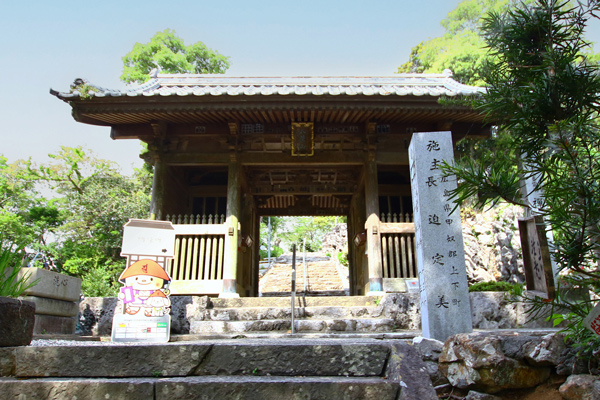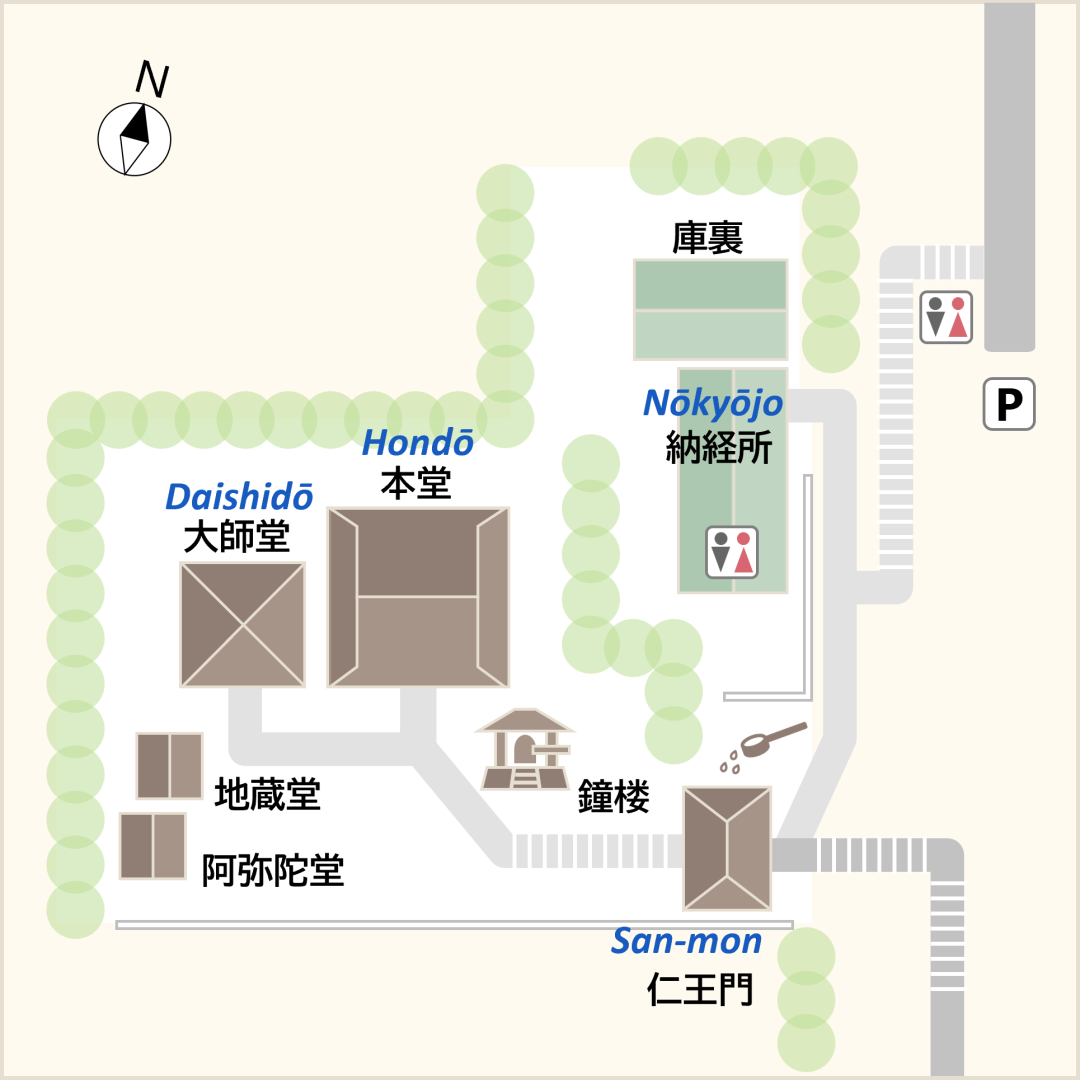The Shikoku Pilgrimage Temple Guide
Temple 32, Zenjibuji

Precinct map

History of the temple
The Pacific Ocean roars on the rocks of Tosa Bay. The temple is located nearby, on top of a small mountain, Mineyama, which is about 82 meters high. Thus the temple is known locally as Minenji, Minedera, or Mineji, three friendly ways of saying Peak Temple. Fishermen also call it Funadama no Kannon Bosatsu (Eleven-faced Bodhisattva Who Hears the Sounds of the World, the Sounds of Ships), as it was built to pray for safety at sea. During the Edo period (1603-1868), not only fishermen but also feudal lords prayed for safety at this temple, as they sometimes had to sail from Urato Bay to Edo (Tokyo).
According to legend, Gyoki built the temple to pray for the safety of vessels sailing off the coast of Tosa by order of Emperor Shomu (reigned 724-749). Kobo Daishi visited the temple in 806. He saw the temple grounds lined with strange and sacred rocks and stones, and felt that it was a sacred place like the Pure Land of Kannon Bosatsu, or the holy mountain Potalaka in India. He carved a statue of Juichimen (Eleven-faced) Kannon Bosatsu as the principal image and named the temple Zenshi Mineji (Zen Master Temple of the Mountain Peak). The mountain name (temples are metaphorically called mountains) became Hachiyōzan (Eight Petal Mountain) because Mt. Mineyama looked like a lotus flower with eight petals.
The temple was deeply venerated and supported by feudal lords including Yamauchi Kazutoyo, the first lord of the Tosa (Kochi). The statue of Kannon Bosatsu, called Funatama Kannon, still attracts fishermen. The Kongorikishi statues at the Niomon gate was created by Jomei, a Buddhist priest of the Kamakura period (1185-1333) and are designated National Important Cultural Properties. The temple buildings stand close to each other. They are surrounded by trees and many strange rock formations, creating a quiet and serene atmosphere.
There is a stone standing along with some strange rocks in front of the Hondo. It is inscribed with Basho's haiku, "Kogarashi ni iwa fukitogaru sugimakana." “Wintry blasts, the rocks looks sharpened, among cedar trees.”
Highlights
Temple Treasures
A temple bell made in 1308, and a flat bell called Waniguchi made in 1570, are designated Prefectural Cultural Assets.
Statue of Kongorikishi
The Kongorikishi statue was made in the Kamakura period (1185-1333) and is designated as a national important cultural property.
Takeuchi Hanpeita
Also called Zuizan, was a samurai who organized the Tosa Kinnoto, which helped to overthrow the government of the Shogun and installed the Meiji Emperor as the ruler of Japan. His former residence and tomb are located down the road from the temple.

Annual Events
| June 17 | Daihannyakai (Service of chanting sutras) |
Details
Names: Hachiyōzan, Gumonjiin, Zenjibuji
Denomination: Shingon sect, Buzan school
Principal image: Juichimen Kannon Bosatsu
Founder: Gyoki
Founded: 807
Access
Address: 3084, Tochi, Nankoku City, Kochi 783-0085
Phone: 088-865-8430
Parking: 30 cars, 10 microbuses, 5 buses (free)
Lodging: None
Official website: None
